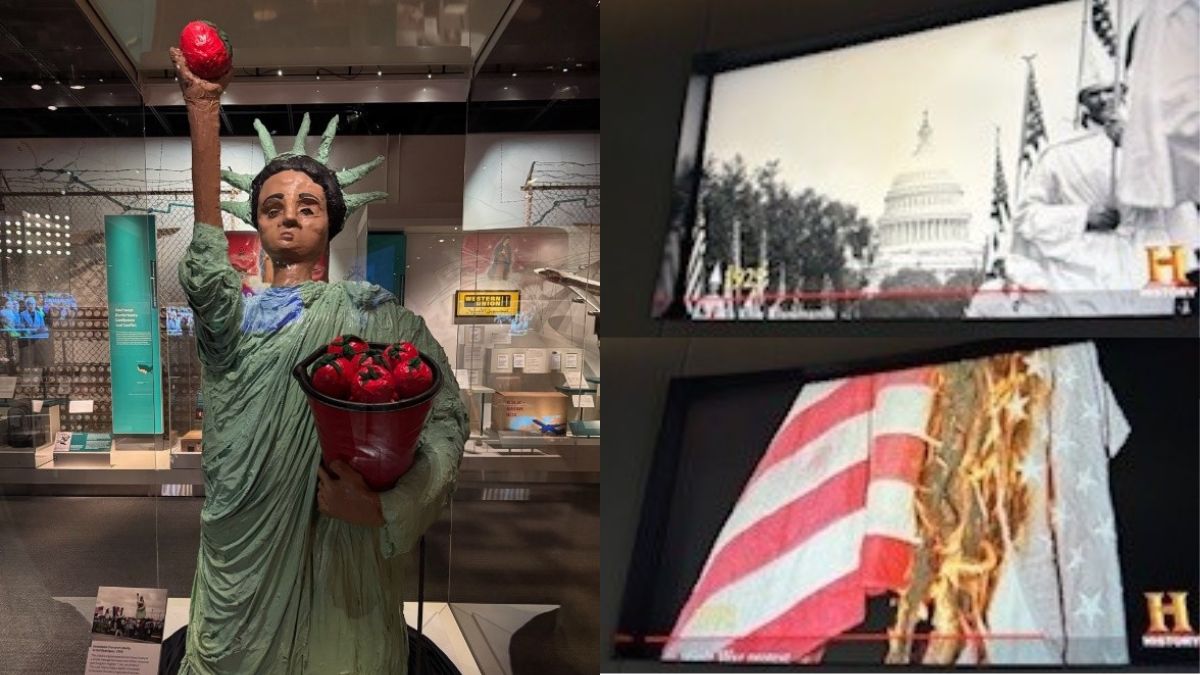The Trump administration has launched a comprehensive review of the Smithsonian Institution's exhibitions, citing concerns that recent displays reflect ideological biases rather than factual history. The review will begin with eight museums, including the American History Museum, which has drawn criticism for its portrayal of American history.
Explainer Trump Administration Reassesses Approach to Sanctuary Officials
Established by an act of Congress in 1846, the Smithsonian Institution is a significant cultural resource in the United States, featuring 21 museums and a zoo. It aims to promote knowledge and understanding of American history and culture. However, critics argue that recent exhibits have strayed from this mission, presenting a skewed narrative that diminishes the American experience.
Lindsey Halligan, Special Assistant to the President, stated, "It is an honor to work alongside the Smithsonian in reviewing its museums and exhibits, with the shared goal of ensuring this treasured institution reflects the very best America has to offer — accuracy, excellence, and the richness of our shared history."
Concerns have been raised about specific exhibits, such as those at the American History Museum, where visitors are greeted with a pride flag at the entrance. Critics assert that the museum promotes controversial topics, including the inclusion of transgender athletes in sports, without presenting a balanced view.
The review will assess all aspects of the museums, including public content and exhibition planning. The aim is to ensure that the Smithsonian's narrative remains fact-based and historically sound.
Visitor numbers have declined in recent years, with fewer than 17 million people attending in the last year, a significant drop from pre-pandemic levels. This decline has prompted discussions about whether the ideological content of the exhibits may be contributing to reduced public interest.
The review will also address the upcoming National Museum of the American Latino, which has faced scrutiny for its framing of U.S. history as one of oppression and imperialism. Critics argue that this perspective overlooks the contributions of Latinos to American society and presents a one-sided narrative.
The Smithsonian's portrayal of historical figures, such as Benjamin Franklin, has also been criticized for emphasizing their ties to slavery while downplaying their contributions to science and the founding of the nation.
As the review progresses, the Trump administration aims to restore what it views as a more accurate representation of American history within the Smithsonian's exhibits. Halligan emphasized the importance of public engagement in this process, inviting visitors to form their own judgments about the exhibits.
The outcome of this review may have significant implications for how American history is presented in one of the nation's most prominent cultural institutions.
Why it matters
- The Trump administration's review aims to address perceived ideological biases in Smithsonian exhibitions, impacting public perception of American history.
- Visitor numbers at the Smithsonian have declined, raising concerns that ideological content may deter public interest in the museums.
- The review will scrutinize specific exhibits, including the American History Museum and the upcoming National Museum of the American Latino, for balanced representation.
- The outcome could reshape how American history is portrayed in a key cultural institution, influencing future exhibitions and public engagement.
What’s next
- Public feedback will be solicited during the review process to gauge visitor perspectives on museum content.
- The review's findings may lead to changes in exhibition planning and content presentation at the Smithsonian.
- Stakeholders are encouraged to participate in discussions about the future direction of the Smithsonian's narrative.
